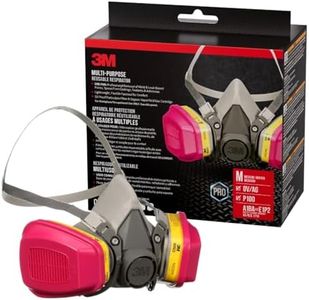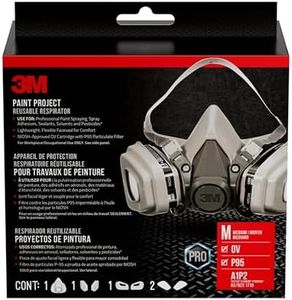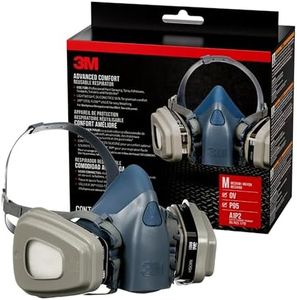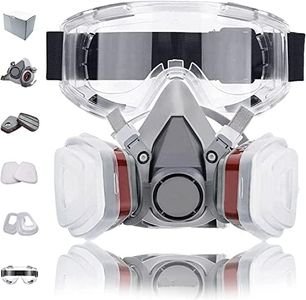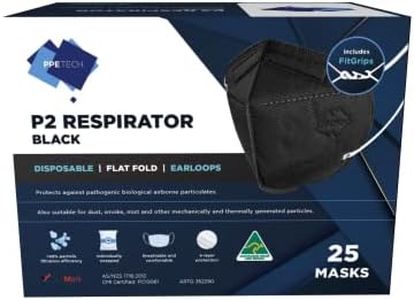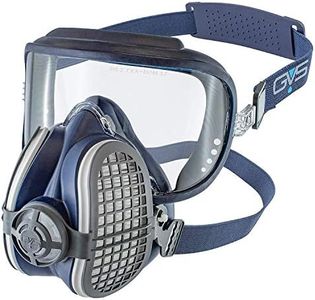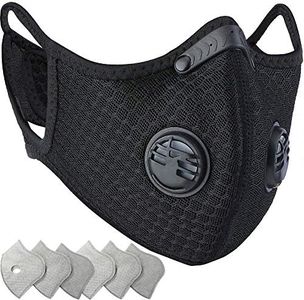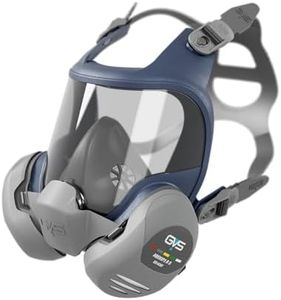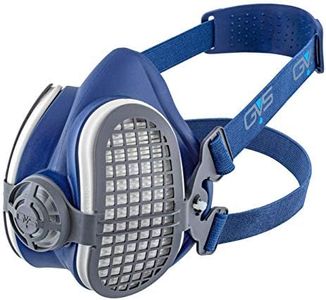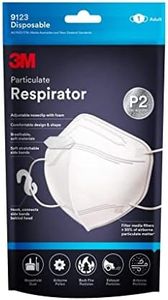We Use CookiesWe use cookies to enhance the security, performance,
functionality and for analytical and promotional activities. By continuing to browse this site you
are agreeing to our privacy policy
10 Best Dust Masks
From leading brands and best sellers available on the web.By clicking on a link to a third party's website, log data is shared with that third party.
Buying Guide for the Best Dust Masks
Choosing the right dust mask is all about matching your protection needs to the environment where you'll be wearing it. Dust masks help filter out airborne particles, making them great for activities like construction, woodworking, cleaning, or even protecting yourself from pollen and allergens. It's important to know that not all dust masks are the same—some are designed for occasional use, while others are made for tougher, more hazardous settings. Understanding the key specs will help you pick a mask that’s comfortable, provides the right level of filtration, and fits your unique situation.Filtration EfficiencyFiltration efficiency refers to how well the mask can filter out dust and particles from the air you breathe. This spec often shows up as a percentage (like 95%, 99%, etc.) or as a classification (like N95, FFP2, etc.). Higher efficiency means more particles are blocked. For light tasks like gardening or sweeping, a lower efficiency mask may be sufficient. If you’re in a high-dust environment or working with potentially harmful materials (like sanding or construction), look for higher filtration efficiency. Basically, the more you need to protect your lungs from fine particles and pollutants, the higher this number should be.
Fit and SizeFit and size describe how well the mask forms a seal around your nose and mouth. A tight, secure fit is key to protection as it prevents unfiltered air from leaking in around the edges. Masks usually come in several sizes or have adjustable straps and nose clips to ensure a snug fit. If the mask feels loose or gaps appear when you move your head, it won’t protect you effectively. When choosing, consider your face shape and test the mask for gaps. If you wear glasses or have facial hair, this may impact the mask's seal, so pay extra attention to this area.
BreathabilityBreathability is about how easily you can inhale and exhale while wearing the mask. Higher filtration masks can sometimes be harder to breathe through, so it's important to find a balance between protection and comfort. If you need to wear the mask for short bursts or light work, breathability may not be as critical. For extended wear, especially in physical jobs, you'll want a mask that allows you to breathe comfortably while still blocking dust. Choose based on how long you'll be wearing the mask and how strenuous your activity will be.
Type of Mask (Disposable vs. Reusable)Dust masks come in both disposable and reusable types. Disposable masks are meant for short-term use—you wear them once or a few times and then throw them away. These are convenient if you don't use them often or want little hassle. Reusable masks often have replaceable filters or can be washed, making them more cost-effective and eco-friendly for frequent use. If you need a mask daily or for long projects, reusable options might suit you better. If it's for occasional work, disposable might be easier.
Valve or No ValveSome dust masks come with a small valve that helps reduce moisture and heat buildup inside the mask, making breathing easier and keeping your face cooler. Masks with valves are more comfortable for longer or heavier work, but be aware that a valve can allow unfiltered air to escape when you exhale, so they're not suitable when source control is needed (like to prevent spreading germs). If your main goal is protecting yourself from dust, a valved mask can be a good choice for comfort, but if you also need to protect others, stick with valve-free.
Certifications and StandardsCertifications and standards let you know if the mask meets certain safety guidelines for filtering dust and other particles. Look for markings like NIOSH, EN, FFP, or KN with numbers (such as N95, FFP2) as these show the mask has been tested for effectiveness. These certifications matter most in professional or hazardous environments. For general use, they offer peace of mind that the mask does what it promises. Match the certification level to the risks you expect—higher standards for hazardous dust, basic for lighter tasks.
